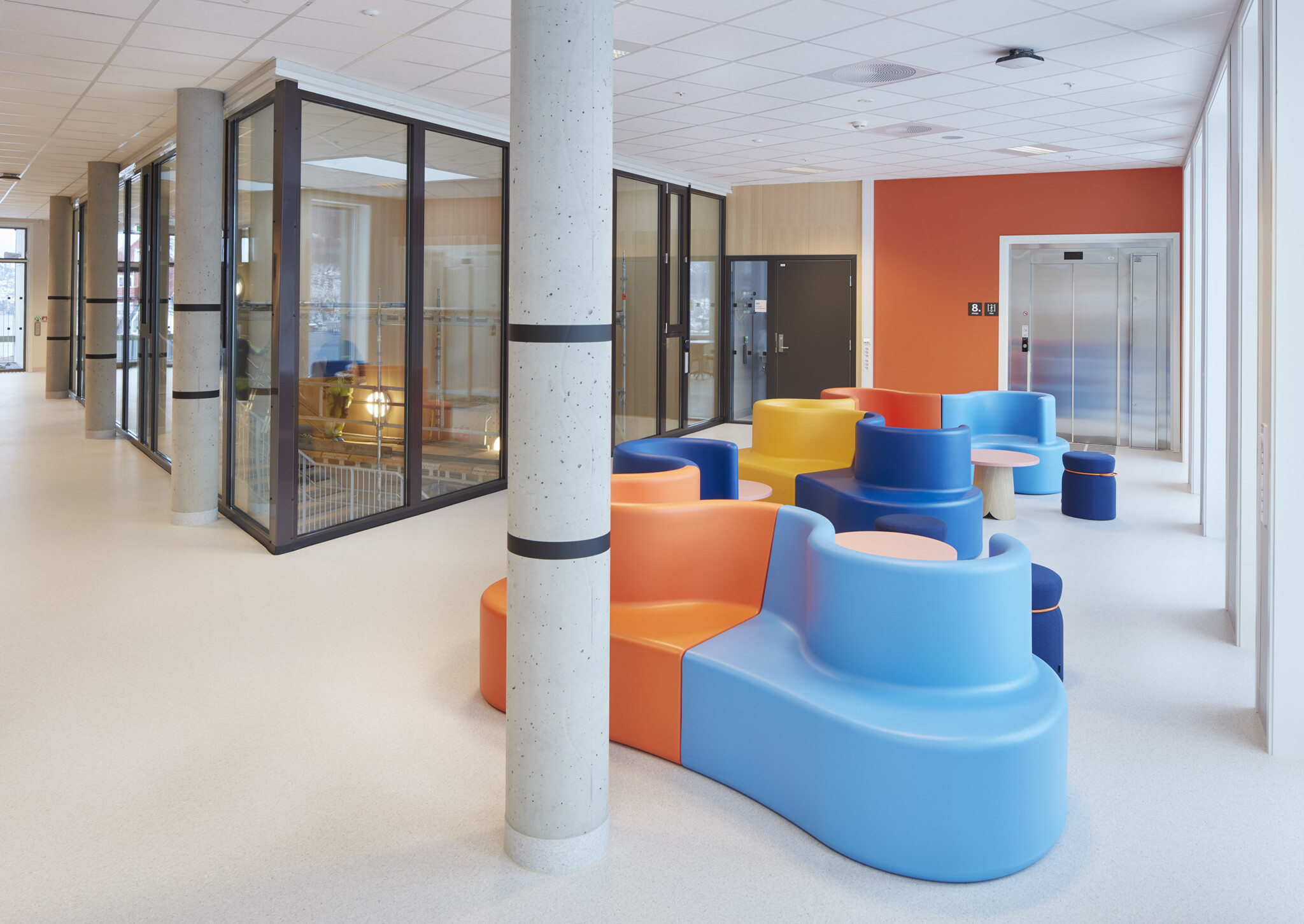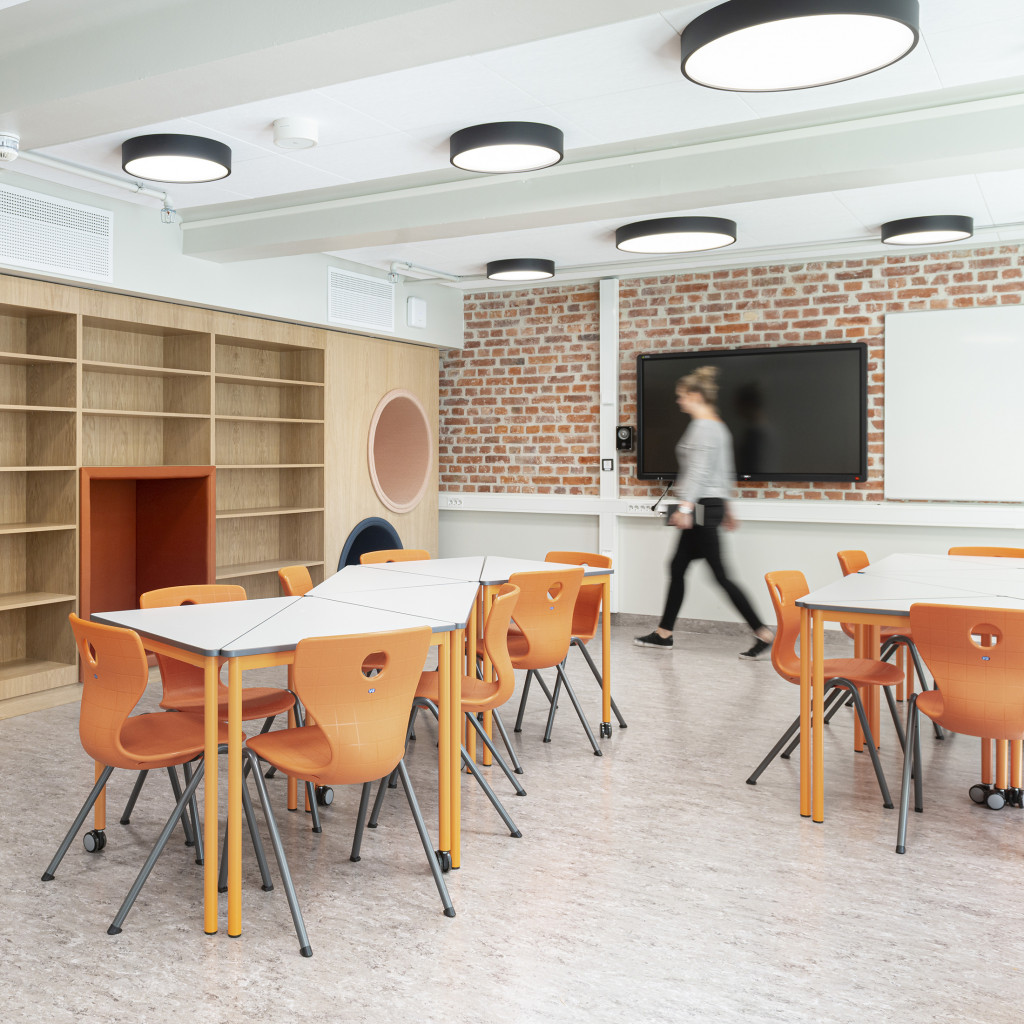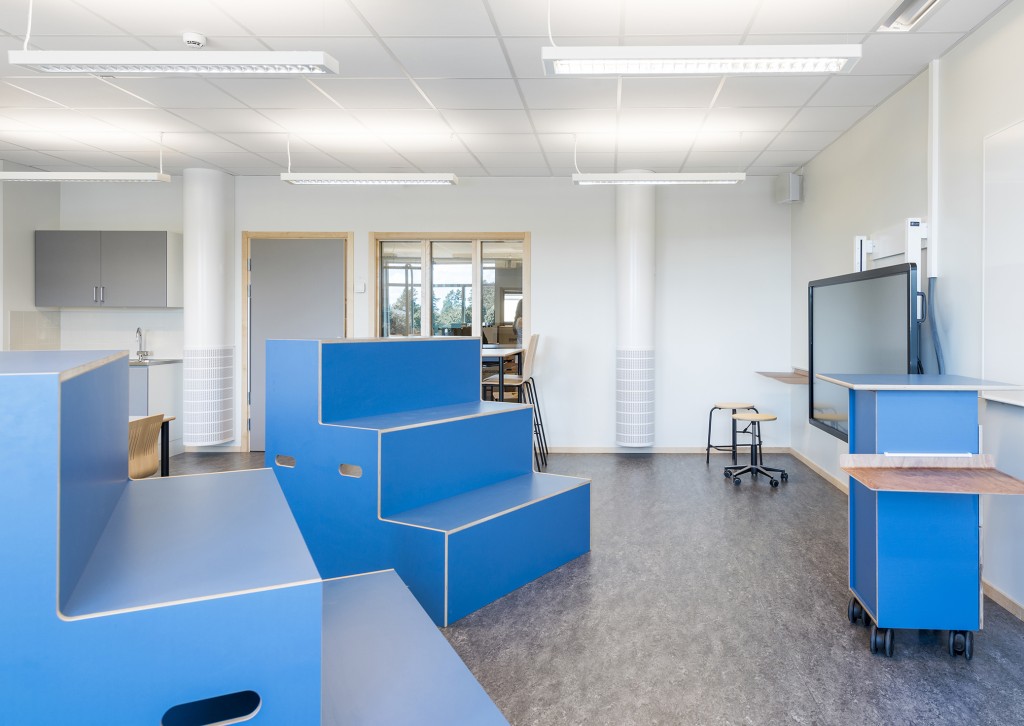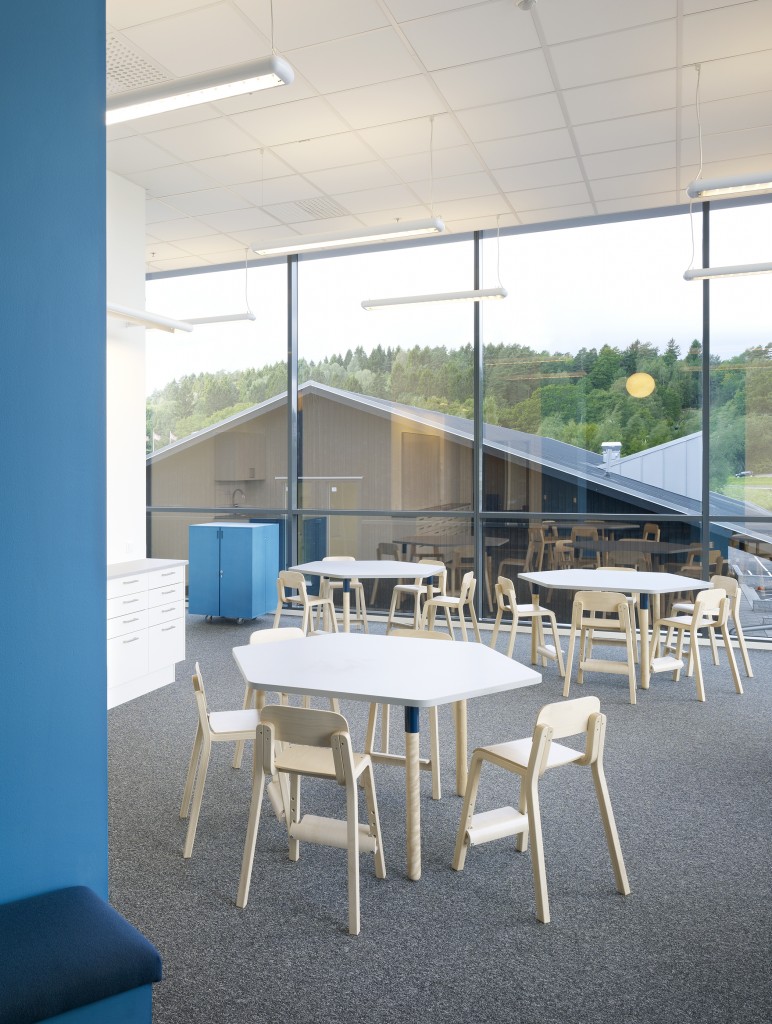Holen skole







When the new Holen school, situated alongside a sloping rock face in a hilly fjord landscape, was redesigned, a familiar colour palette played a key role. Thanks to space-saving furnishings and orientation colours, the new building is full of inspiring learning environments.
Holen school in Bergen, Norway, accepted its first pupils in 1920. The former elementary school became a historic site in the city after an air raid during the Second World War caused extensive damage to the building and, unfortunately, claimed several lives. When the school was later rebuilt in the 1950s, it became a landmark – and a place of remembrance for the local community.
Now Holen school has been brought up to date once more, with the restoration of the existing building and the integration of another building along the rock face that characterises the site. What used to be two different buildings for a primary and secondary school has now been linked with the help of bespoke solutions.
“By retaining the original structure, we have linked the school to the historical site and preserved a contemporary feel from the 1950s. A culvert serves to link the old school with the new one, while the air-raid shelters from the post-war period have been transformed into social spaces, cloakrooms, toilets and a room for screening films,” says Cadi’s Elin Skjeseth Bashevkin, the interior architect responsible for the project.
Le Corbusier colour palette
Since its opening, bold colours in the interiors and on the walls have become synonymous with Holen school. A colour spectrum taken from the palette of the architect Le Corbusier – with the aim of inspiring and stimulating the students.
“Bergen is one of the wettest cities in Europe, and the frequent lack of sunshine often makes interiors seem dark. In order to fill classrooms and corridors with life and harmony, we chose a characteristic colour scheme to feature throughout the building,” says Elin.
The design of the original school environment was made possible thanks to a close partnership between the interior architects, who are behind the concept, and Input interior, who delivered and assembled most of the interior furnishings.
“The colours of the furniture reflect the surroundings and our planet. On the lower floors the decor is dominated by earthy tones, while in the central sections of the building pink, magenta and orange are more prominent. On the uppermost levels, closest to the sky, there are various shades of blue used in the furniture – with cobalt blue at the very top,” says Elin.
“The interior works as an orientation map that helps inform students and staff what floor they are on. It will prove an effective way to differentiate between the various floors,” says Steinar Thorsen, Project Manager at Input Interior.
An interior design based around the curriculum
In order to optimise teaching and learning, both teachers and pupils have been involved in planning the interior design. With practical knowledge and experience of the school’s day-to-day activities, important insights have been gathered that, in consultation with the interior architects, were key when it came to choosing the furniture.
“It is important for us to hear from both the students and teachers in order to be able to select a range of furniture that supports teaching in the classrooms. We have developed proposals for chairs and tables, of a high quality and with ergonomic demands, that the students have been able to try out before the final choice was made,” says Elin.
Space-saving has been an ever present issue on the school’s limited grounds. A challenge that Input interior has helped to solve by supplying furniture with special dimensions that was assembled on site.
“The limited space and the many angles and shapes that occur in the school proved to be a test from the start. With a large proportion of custom-made furniture, we were able to minimise the use of space without compromising the options for teaching. We managed to turn it into an advantage by using every part of the building,” says Steinar.
When the students finish for the day on one of the eight floors of the building, they can, thanks to the sloping rock face, go directly into the schoolyard via the ground entrances located on the first seven levels.
Environmentally adapted school
The mountainous terrain of Bergen has made it possible to use geoenergy to heat and cool the premises. Along with a grass roof that promotes biodiversity and solar panels, Holen school has set a high standard for new public school buildings in Norway to follow.
“Both during the construction process and in the interior design, there has been great focus on the environment and quality, and we take pleasure from the fact that we are always striving to find sustainable solutions. At a school, where furniture quickly becomes worn, it is particularly important to have quality furnishings in order to minimise new purchases that are economically and ecologically costly,” concludes Steinar.



















